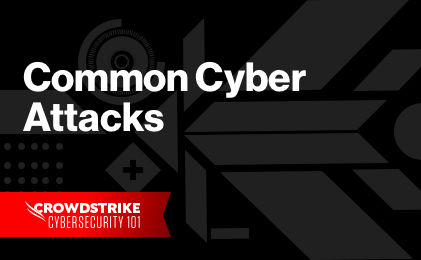What is an injection attack?
Injection attacks occur when attackers exploit vulnerabilities in an application to send malicious code into a system. This type of exploit may allow them to execute unauthorized commands, access data, or manipulate the system’s operations. Because injection attacks can be very dangerous — and because they’re widespread in use — they present a critical threat to cybersecurity today.
In this post, we’ll examine injection attacks. We’ll break down their common methods and typical targets. Then, we’ll look at the impact of injection attacks and how organizations can prevent and mitigate them.
Core concepts
Injection attacks insert malicious code into a program, leading to unauthorized command execution or data access. Though injection attacks come in various forms, key types include:
- SQL injection: Exploits database vulnerabilities through malicious SQL statements, affecting data integrity and availability.
- Command injection: Executes unauthorized commands on the host operating system, potentially taking control of the system.
- XML injection: Compromises XML applications by manipulating the processing of XML data or documents.
A simple example of a SQL injection attack
Let’s illustrate by looking at an example of a SQL injection attack. Consider a web application login form that queries a database to validate user credentials. The web form has two input fields:
username and password.
In this simplified example, we might expect the server-side script to validate the credentials with a SQL query that looks like this:
SELECT *FROM users
WHERE username='${request.body.username}' AND
password='${request.body.password}'
The script would replace the value for
request.body.username with johndoe and the value for request.body.password with the supplied password.SELECT *FROM users
WHERE username='johndoe' AND
password='Fubs8pfD25^b3^*Xq$FM5@76'
If the username and password combination does not match an existing record in the
users table, then the query will not return any rows.However, if there is no sanitization of the web form inputs, consider what would happen if the end user submits a form with these values instead:

- (The value for password
password, though obscured, is the same as that ofusernameusername.)
Without sanitized inputs, the resulting SQL query would look like this:
SELECT *FROM users
WHERE username='' OR '1'='1' AND
password='' OR '1'='1'
This query would return all rows from the
users table, potentially allowing the malicious attacker to log in successfully as the first user returned.Common targets and vulnerabilities
Injection attacks target various systems, exploiting specific vulnerabilities. Common targets include:
- Web applications: Often exploited if dynamic content generation is based on user input.
- Databases: Primarily targeted by SQL injections, with queries manipulated to extract, modify, or delete data.
- Operating systems: Command injections can alter system functions or corrupt files.
- Software applications: Code injections can execute unauthorized code, affecting application logic and data security.
- Web servers: Susceptible to host header injections that can redirect users to malicious sites or manipulate server behavior.
Attacker techniques
At a basic level, attackers might employ simple methods like exploiting unsanitized input fields for SQL injection. However, attackers may adapt to more robust defenses, turning to advanced tools to automate vulnerability discovery and execute complex injection attacks. More recently, attackers are leveraging AI-powered tools to analyze security patterns, adapt to protocols, and find effective attack vectors.
As attack techniques evolve to be faster and more efficient, the arms race between cybersecurity measures and attackers' tactics accelerates. This emphasizes the need for continuous updates and vigilance in security practices.
Impact of injection attacks
Injection attacks can be devastating. When attackers successfully exploit these vulnerabilities, they can access sensitive data such as personal information, financial records, and proprietary business data. This unauthorized access to sensitive data not only poses a direct threat to individuals and organizations but undermines trust. In cases of data breaches, the compromised data can be used for further attacks, sold on the dark web, or leveraged for blackmail and extortion via criminal-controlled dedicated leak sites.
In addition to data breaches, an injection attack can cause system downtime by overwhelming or corrupting the targeted system’s operations. Service disruptions can have far-reaching implications, as operations — and sometimes sales — are halted, requiring time-consuming repairs and data restoration efforts. The results are financial losses, reduced customer satisfaction, and potential long-term reputational damage.
Finally, injection attacks that result in data breaches may cause organizations to face regulatory fines or legal action. The combination of legal repercussions for data privacy violations and broken customer trust can be crippling.
Learn More
Read this blog to learn how threat intelligence, threat hunting, and rapid response stop SQL injection campaigns.
Prevention and mitigation strategies
To safeguard your systems against injection attacks, consider implementing robust prevention and mitigation strategies. These measures will protect system data and maintain system integrity, thereby ensuring business continuity and preserving customer trust.
Key defensive strategies include:
- Input validation and sanitization: Implement strict validation rules for user inputs, processing only expected and safe inputs. Sanitize inputs by removing or neutralizing potentially malicious code before it can be executed.
- Secure coding practices: Adopt secure coding standards that expressly address injection vulnerabilities. Examples include the use of prepared statements and parameterized queries when working with database transactions.
- Regular security audits and updates: Conduct periodic security audits to identify and rectify vulnerabilities in your systems. Keep your systems and software up to date with the latest security patches.
- Leverage AI-native security solutions: Modern cybersecurity solutions leverage AI technologies to provide automated threat detection, behavioral analytics, and enhanced threat intelligence. With the ability to analyze vast amounts of data, AI can identify subtle signs of injection attacks or their attempts, enabling quicker and more effective responses.
Defend against injection attacks with intelligent threat detection and response
In this post, we covered the essentials of injection attacks, from their types and targets to the devastating impacts they can have on data and system security. We also outlined effective prevention and mitigation strategies, noting the critical role of AI in enhancing cybersecurity efforts.
The CrowdStrike Falcon® platform offers advanced solutions for intelligent threat detection, response, and threat hunting. Organizations depend on the Falcon platform to identify vulnerabilities and combat injection attacks. For more insights on bolstering your defense mechanisms, sign up for a free trial or contact our team today.







